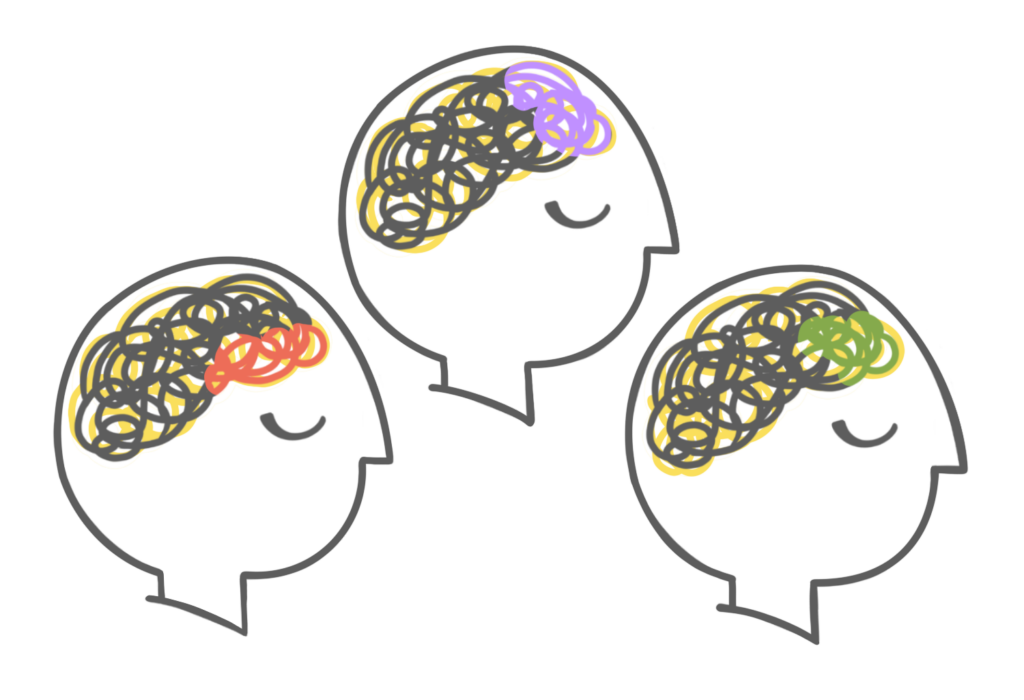Finding Thinking Styles

This course is undergoing a substantial update in 2025. We will probably launch it Section by Section, starting in October. (There are four sections.) In the meantime, check out the Thinking Styles explanation page for information about thinking styles.
About This Course
Prerequisites
- Recognition of the difference between concepts at exterior vs. interior
- Understanding the focus on interior cognition (inner thinking, emotional reactions, guiding principles) which represent cognitive empathy
- How to conduct listening sessions for data collection (here is a readiness quiz)
- Writing summaries of concepts at depth using the formula: verb + key point + supporting details
Recommended Knowledge
- What Are Thinking Styles?
- Articles about Thinking Styles
- Pages 116-119 in Practical Empathy
- Articles about Demographic Assumptions
- Watch one of Indi’s latest recorded talks
- Listen to one of Indi’s recent guest appearances on podcasts
Summary
Thinking styles are deeply-researched, demographics-free mindsets. They are much more reliable and flexible than demographic & psychographic descriptions of sets of people.
Segmenting your audience by demographics invites bias and discrimination.
A well-researched persona is a good tool to guide your strategy and scenario-writing. But often personas are built in a day using quantitative data and invented “decorative” detail. When teams accept the convention of using names, faces, and ages in their personas, it allows cognitive bias to creep in. Demographic assumptions are harmful. This demographic approach to personas ends up as an unusable mashup of target market description and product design guidance. It frequently only addresses the buying behavior. If a set of personas does venture past buying into usage, they usually represent only one philosophical approach to users’ overall purpose. This one philosophical approach is duplicated with different “skins” to show “diversity.”
Thinking styles are a better way to support a broad diversity of people.
Thinking styles represent patterns of inner thinking, emotional reactions, and guiding principles derived from listening sessions. They’re archetypes. You use them in gap analysis to see where your solutions offer weak support for certain thinking styles. You use them for the characters who play roles in an org’s design scenarios: buying, on-boarding, usage, workarounds, retention. With a connection to the inner mindsets people have as they seek to achieve their own purposes, your team will become aware of broader cultures and philosophies. This variety allows your organization to multiply the number of goals and solutions you can seek to support.
You will learn how to:
- Practice the neutral mindset of understanding people as people
- Derive thinking styles from research
- Provide the core concepts at depth that differentiate thinking styles
- Represent complex sets of thinking styles in a way many teams across a large org can easily use
- Convert existing personas to thinking-styles
- Gather core concepts from existing research
- Stop writing repetitive (and useless) scenarios
- Give you org a clear path to address discrimination and support different physiology
Course Features (for new format in bundle):
- Videos that don’t require you to look at the screen
- Exercises with answer sheets
- Downloadable diagrams
- Closed captions for each video, along with descriptive transcripts
- Accessible PDFs
- Downloadable transcripts
- Add on Live Group Meetings to do the exercises with Indi
- Live Group Meetings count toward Certification in Problem Space Research
- Membership in Indi’s Slack workspace (no time limit)
Testimonials
The give-and-take gave me the impression that I was part of something that’s still evolving, which is exciting. Those of us applying problem space research to our work are part of the evolution. Each engaged student becomes part of how this fluid process is taught, and how it may be…
— Cindy Lowrey, 15-May-2019
Read moreThe training is a great way to expand how you conduct user research. Indi teaches you how to conduct your studies and analyze your data so that you’re getting to the heart of the users’ problems and better understanding their needs. I hadn’t realized how much rich data I’ve been…
— anonymous, 28-May-2019
Read more
Do it! You learn so much in just a few weeks. And though it’s online, it’s very interactive and personal, not at all like a webinar. And there’s homework that Indi actually checks!
— Francesca, 15-May-2019
It’s a better way to look at the people you want to design for, based on real and not made up data.
— Bibiana, 10-Apr-2020
It was great to work with Indi. She is a pioneer in the field of qualitative studies. She also came from a developer background which is useful when you are involved in software projects.
— Dana Lynn, 16-May-2019
Just do it.
— Yannis Masouras, 2-Jun-2021
Frequently Asked Questions
Q: If I have questions about the course content, will Indi answer them for me?
A: Asking a question in the Slack community will give Indi, her team, and many other Slack members a chance to see the question and respond to it.
Q: Do the recordings qualify me for Indi’s Problem Space Certification Program?
A: Not quite. You will also want to join the Live Practice series for each course. In these Live Practice meetings, you get to work on exercises together with Indi and others. This is where we discuss nuances of context and share experiences that help others prepare to conduct their own research. Live Practice meetings give you a chance to double your knowledge and demonstrate your understanding.
